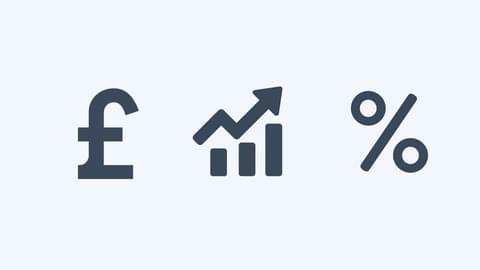How To Report On Ad Campaign Results (and Prove ROI)
Numbers don't lie, but they can be confusing.
When it comes to proving the value of your ad campaigns, the difference between a confused stakeholder and a convinced one often comes down to how you present your results.
Good campaign reporting is more than collecting data. It’s also about how you translate performance into actionable insights that justify ad spend and guide future decisions.
Whether you're sharing results with execs keen on seeing the bottom-line impact or digging into the details with your marketing team, how you frame and present your campaign performance can seriously affect your credibility as a marketer.

Knowing what matters most
The best marketers prioritise metrics that are directly linked to business results. One of the most straightforward ways to measure a campaign’s ROI is to calculate the percentage increase in sales relative to the total campaign spend:
ROI = (Sales growth - Marketing Cost) / Marketing Cost
The key is to rank your metrics based on how closely they tie to revenue. Impressions and reach are great for measuring visibility, but if you want to know how well your campaign is actually performing, focus on conversion rates and cost per acquisition.
Most marketers aim for a 5:1 ROI (earning £5 for every £1 spent), which is slightly above the industry average.
Keep your reports focused on what matters most. If your goal is brand awareness, highlight impressions and reach. For performance-driven campaigns, zoom in on conversions, CPA, and ROAS.
Building reports that tell a story
Great campaign reports follow a structure that guides readers from high-level performance to specific insights and recommendations.
The summary
Start with an executive summary that answers the most important questions upfront: Did we meet our goals? What was our ROI? What should we do next?
Keep it flowing
Your main report should follow a logical flow. Begin with overall campaign performance against stated objectives, then dive into channel-specific results, audience insights, and finally, optimisation recommendations.
Use visuals to highlight key findings and make complex data accessible to non-technical stakeholders.
Paint a picture
Visuals make complex data easier to understand.
Choose the right charts, use consistent colours and add clear labels to highlight relationships in your data.
Don't overwhelm readers with every available metric. Instead, select the data points that support your narrative to help stakeholders understand what's working and what isn't.
Context is everything. Compare current performance to previous periods, industry benchmarks and stated goals. For example, the average cost per lead in Google Ads in 2025 is $70.11 (£51). Knowing where you stand relative to industry standards helps frame your results. Take a look at our blog: How much it costs to advertise on Google in 2025
Proving ROI beyond simple calculations
Basic ROI calculations are a great starting point, but marketers know it's worth digging deeper to uncover the real story behind their campaign results.
Studies indicate that media investments typically generate as much return in the first four months as they do in the following 20 months combined. So, if you want a complete picture of your campaign's impact, you need to consider both immediate wins and long-term outcomes.
Consider attribution models
Most conversions happen after multiple interactions - not just the final click. If you’re only measuring that last step, you’re missing key insights.
Attribution models let you track the full customer journey, giving credit to every touchpoint that helped drive the conversion.
For example, a customer might first see your Facebook ad, then search for your brand on Google, and finally make a purchase after clicking an email offer. Attribution shows how each of those steps contributed, giving you a more accurate view of what’s really working.
Factor in customer lifetime value (CLV)
Don’t just focus on short-term gains - CLV shows the bigger picture. A campaign might seem pricey upfront, but if it brings in loyal, high-value customers, the long-term return can be much higher.
For example, you might pay more to acquire a subscriber, but if they renew regularly or make repeat purchases, that initial cost pays off many times over.
Reporting on brand campaigns
Brand awareness campaigns can be tough to measure - they don’t always lead to instant sales, but they’re crucial for long-term growth. To show their impact, focus on metrics like brand awareness, share of voice, and assisted conversions.
For example, after a brand awareness push, you might see more people searching for your brand name or higher engagement across channels. These signals prove your campaign is building lasting value, even if the payoff isn't immediate.
Essential metrics for different campaign types

Different campaign objectives require different reporting approaches. Here’s how to track performance based on your campaign objective:
Performance Marketing (Direct Response)
These campaigns are all about driving actions – like purchases, sign-ups, or enquiries. Focus on metrics such as:
- Cost per Conversion (also known as Cost per Lead, Action, or Acquisition) – Shows how much you’re spending to get a single conversion.
- Return on Ad Spend (ROAS) – Tells you how much revenue you earn for every pound spent on ads.
- Conversion Rate – Measures how well your campaign turns clicks into actions.
Brand Awareness Campaigns
Brand-building efforts require a different set of metrics focused on visibility and perception. These metrics don’t always tie directly to revenue, but they show progress towards long-term brand goals:
- Reach
– The total number of unique people who see your ads.
- Frequency
– How often the same person sees your ad.
- Brand Lift Studies – Research used to measure changes in brand perception.
- Assisted Conversions – Actions influenced by your campaign, even if they didn’t lead to an immediate conversion.
Remarketing Campaigns
Remarketing targets people who’ve already interacted with your brand. These campaigns often deliver strong results but can suffer from diminishing returns if overused. Focus on:
- Audience Size – The number of people you can re-engage.
- Frequency Capping – Controls how often the same person sees your ad, helping to avoid ad fatigue.
- Incremental Lift – Shows how much extra impact your remarketing ads have, beyond what would have happened organically.
Social Media Campaigns
Social campaigns often serve both brand and performance goals. A blended approach gives you a fuller picture of how your social campaigns are performing. Track a combination of:
- Engagement Rate – Interactions such as likes, comments, and shares.
- Social Sharing – How often your content is shared by users.
- Earned Media Value – The value of unpaid exposure through shares and mentions.
- Traffic Quality – How relevant and engaged your social traffic is once it hits your website.
- Conversion Metrics – As used in direct response campaigns.
Using automation and AI in reporting
Modern reporting tools have transformed the way marketing teams analyse campaigns, by automating much of the repetitive manual work.
Marketing teams often spend up to half their time dealing with ad-hoc reporting requests. Automation helps reclaim that time, allowing more focus on strategic planning and decision-making.
These tools can pull in data from multiple sources and present it in a clear, easy-to-digest format - giving you faster, more actionable insights.
Predictive analytics and machine learning are also helping marketers spot future trends. By examining historical data, you can identify emerging trends that might otherwise go unnoticed - bringing a forward-looking dimension to your reporting.
However, automation is most effective when paired with human insight. While these tools are excellent at detecting anomalies or unusual patterns, interpreting their significance and knowing how to act still relies on your expertise as a marketer.
Making reports actionable
The best campaign reports don’t just show the figures; they set the stage for what you should do next.
Instead of only reporting numbers, clearly highlight your top recommendations. For example, if some audiences aren't responding well, suggest moving your budget elsewhere.
Organise your recommendations clearly, noting quick wins and longer-term actions.
Make sure each action has a clear owner and use future reports to check progress. This creates accountability and supports an ongoing cycle of improvement.
Tools and platforms for better reporting
Google Analytics is a must-have for understanding website behaviour and tracking conversions. But it’s even better when paired with analytics from individual advertising platforms like Facebook Ads Manager or Google Ads. Each of these platforms can offer valuable details that broader analytics tools often overlook.
There are of course, other all-in-one marketing analytics solutions that can help streamline your campaign reporting, such as Ruler Analytics, Infinity and Adobe Marketo Engage.
It's also worth looking into marketing attribution platforms, which track the entire customer journey across different touchpoints. These solutions provide clearer, more accurate ROI numbers by giving credit to each step along the customer's path to conversion.
Setting up for success
Start by setting clear expectations around reporting. Decide how often different metrics should be reviewed: some may need daily tracking, while full campaign reports might be better created on a monthly or quarterly basis. Match your reporting schedule to your campaign length and decision-making timelines.
Use templates and standard formats to keep your reports consistent. This makes it easier to track trends and compare results over time or across campaigns.
Finally, document your approach. Clearly explain how you calculate ROI and attribute conversions. When stakeholders understand your methods, they’re more likely to trust your insights and take action.
Clear reports create confident decisions
Great campaign reporting turns raw data into clear, actionable insights. Stakeholders need to see how marketing spend connects to real results.
When your reports highlight what’s working and what to do next, campaigns improve, decisions get easier, and your team earns more trust - proving the value of your investment.
At Bluesoup, we turn complex data into clear, impactful reporting that drives growth and earns trust.
Ready to make your marketing results impossible to ignore? Let’s make it happen. Get in touch today.